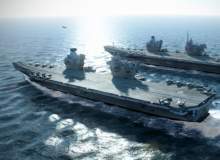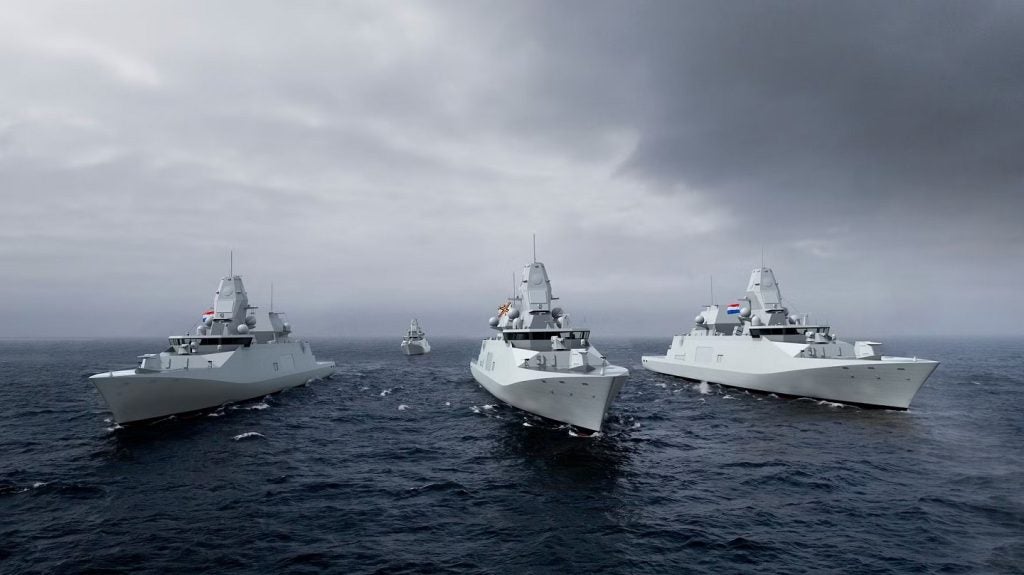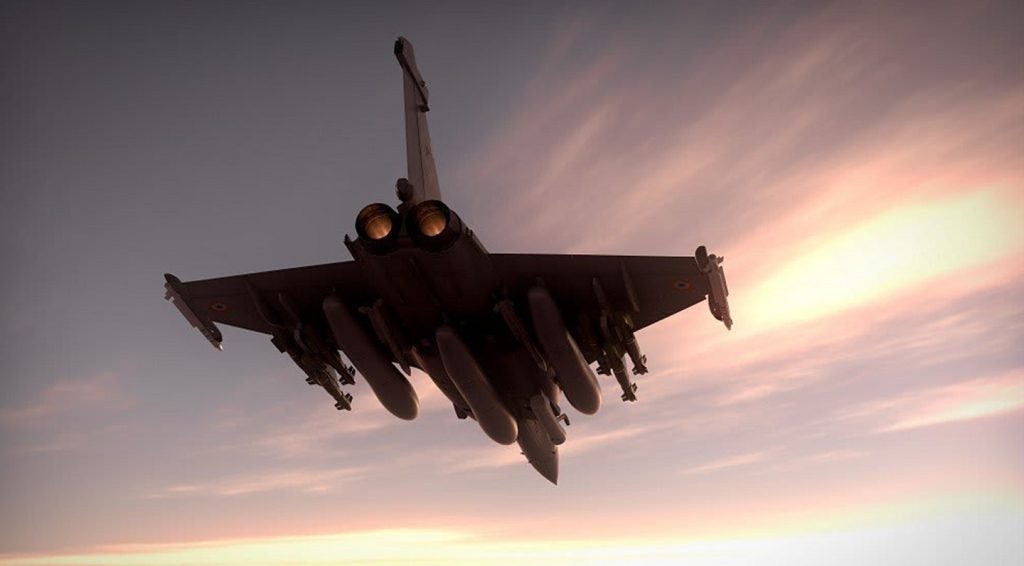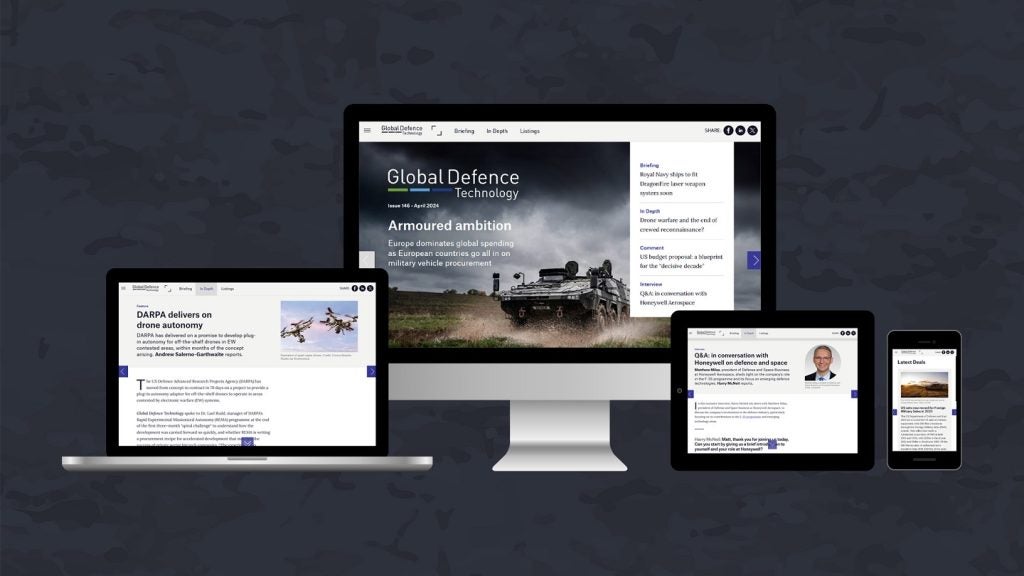

The fourth of July may be etched on American calendars as Independence Day, but this year the British will have their own reason for patriotism. The HMS Queen Elizabeth, the first of two next-generation aircraft supercarriers, will undergo its naming ceremony at Rosyth Dockyard on the Firth of Forth, ahead of commissioning in 2017 and achieving full operational capability in 2020.
Everything about HMS Queen Elizabeth is big; 280m long with a 70,600 tonne displacement and 16,000m2 of deckspace, a crew of 679 and capable of carrying 36 F-35 fighter jets and four helicopters. But all of this is put in the shade against the programme’s breathtaking cost; a cool £6.2bn for both ships.
The carriers represent just one of many huge defence projects across Europe currently rounding off development or well into delivery, among them the NH-90 and Tiger helicopters, the A400M Atlas military transport aircraft, the Typhoon and the Franco-Italian FREMM frigate. But after these landmarks there is a lull expected in large-scale new projects, which poses a potential risk to countries’ ability to project military power and the health of the defence industry.
How well do you really know your competitors?
Access the most comprehensive Company Profiles on the market, powered by GlobalData. Save hours of research. Gain competitive edge.

Thank you!
Your download email will arrive shortly
Not ready to buy yet? Download a free sample
We are confident about the unique quality of our Company Profiles. However, we want you to make the most beneficial decision for your business, so we offer a free sample that you can download by submitting the below form
By GlobalDataWhy the lull?
Professor Trevor Taylor, professorial research fellow in defence management at the Royal United Services Institute, believes that in the UK a number of factors are at work.
See Also:
"The government has broadly achieved its aims of having an affordable equipment plan, and projects in the portfolio are coming to maturity fairly quickly," he says. "The combination of these two factors means there aren’t the dramatic new projects that we might have seen in an earlier era. Coupled with the fall in research spending over the last 15 years, this is making people think the defence industry is not going to have the next generation of products that it needs in the UK."
Much hinges on what the government specifies in the next release of the Strategic Defence and Security Review (SDSR), which is due after the General Election in 2015, with the contributors in the unenviable position of speculating what future missions UK forces need to be prepared for.
"I don’t think anybody feels the world is getting calmer or safer with less potential for conflict, and we’re a bit more pessimistic about our ability to influence and shape conflict in a way we desire," says Taylor.
See the first section of HMS Queen Elizabeth set sail from HM Naval Base Portsmouth for assembly at Rosyth dockyard.
While the SDSR shapes an affordable plan, it does not necessarily address all the assets that a UK force might need, meaning there may be significant capability gaps, and the cost of support has not been given as much attention as that of acquisition.
"The central problem is that the government is intent on maintaining the independent deterrent in the form of the Trident replacement programme while wanting conventional forces of some significance that are able to be projected around the world," argues Taylor. "Many of us doubt that 2% of GDP can pay for both those things, however well your defence sector is run."
And while a shift of focus towards Asia has been a theme of the defence policies of the US and its NATO allies, the Ukraine crisis and the new stance emerging from Russia may call for military resources to be shaped in a way that is more oriented toward large inter-state confrontation.
The missile model
In uncertain times, the missile industry, which has enjoyed continued success, employs a business model that could potentially be replicated across others. The government made a decision in 2005 to maintain in the UK a capability to design, develop, test and support a range of missiles, based around the MBDA-led Team Complex Weapons consortium, which is behind such successful weapons as Storm Shadow, Meteor and the dual-mode Brimstone.
"It’s worked well operationally in the way in which the company has responded to the Libya campaign which was widely regarded in terms of stepping up production," adds Taylor. "It’s been a demonstration that a close government relationship with industry does not mean that industry is complacent, they seem to be jointly motivated to develop the stuff."
Air power
By contrast, while it is widely agreed that unmanned combat air vehicles (UCAV) will be a key component of future Royal Air Force fleets, the government seems to be dragging its heels over committing to a way forward.
"We still don’t know what’s to be national, what’s to be European and what we’re going to buy from the US, and that’s taking an awful long time to sort out," says Taylor. "A combination of countries not knowing what they want from workshare, and not having a comprehensive understanding of how the use of UCAVs is going to evolve means the notion of a requirement is not easy to settle."
As far as manned aircraft go, Taylor believes the appeal of Typhoon has been adversely affected by its production costs, which are high partly because of the way in which it is put together by four countries.
"Typhoon is a large but highly agile aircraft that’s capable of carrying a big range of weapons, and the UK controls integration of those weapons on to the platform," he explains. "The technological potential of Typhoon, with its ability to have new sensors including electronic scanning radar, looks more significant today than it did ten years ago."
A larger, cheaper naval fleet?
The Queen Elizabeth aircraft carriers are the surface vessels story of the decade, and while the cost has been significant, it will have been spread over 20 years by the time the first vessel is commissioned. However, once these behemoths are afloat, Taylor believes the UK will probably shift its emphasis to a larger number of more affordable ships.
"It’s not so much size as how much kit you put on the ships," he argues. "The Type 45 is a very capable vessel, but we’ve only got four of them. We could end up in the same position with the Type 26, delivering far fewer than originally planned."
With operations in Afghanistan drawing down, the US Marine Corps is once again concentrating on its core mission as a sea-based expeditionary force.
The solution could be to plan for more, less capable ships; something the US is aiming towards. While the Type 45 has provided more valuable service engaging in counter-piracy than in disaster relief operations in the Philippines, the same effect could have been achieved with a vessel costing a tenth as much.
Land vehicles: to make or to buy?
The role of tanks has changed little since the 1930s, when the best defence against a tank was another tank. Nowadays the biggest threats to tanks include attack helicopters and anti-tank weapons’ munitions borne by other vehicles or dismounted people.
"The mixture of firepower, armour, people-carrying capacity, communications capacity, surveillance ability, and the question of whether vehicles are best with tracks or wheels all mean the land warfare picture is pretty fluid at the moment," says Taylor.
While the Scout SV and Warrior Upgrade programmes are central to the MOD’s land warfare plans, the armoured vehicles currently returning from Afghanistan are so specifically specialised towards asymmetric warfare, it is questionable how useful they will be in future conflicts. The range of operations in which the army might be called to engage, the range of opposition they might face, and the way they might be pressed to conduct future operations means it is difficult to identify what types of vehicle might be useful. But because armoured vehicles are less complex and physically smaller, there is more scope for modularity.
"I think Afghanistan dented our reliance on vehicles built by allied nations because suddenly we wanted to modify and create systems that were more defensible," says Taylor. "Nevertheless, the reality is the government doesn’t have great faith in the British ability to design and develop new armoured vehicles, certainly not big ones, and they’re thinking of looking to foreign markets. Though there is an expectation that any vehicles we buy will be supported and modified here."
Reconstitution and regeneration
Whatever the shape of the next generation of UK Armed Forces assets, their ability to properly support future theatres depends on lessons learned from past conflicts. In recent years, the British government has relied on its ready access to industry to be able to carry out military operations. To that end, maintaining the capacity of industry to produce technology is as important as maintaining appropriate military wherewithal.
"There’s talk in defence about reconstitution and regeneration, meaning how you reconstitute an ability for, say, large-scale armoured warfare, or if you let your anti-submarine warfare skills lapse," explains Taylor. "Actually, the reconstitution of industrial capability is in my view even more difficult that the reconstitution of frontline military capability. If you let it go, it’s pretty much done."
Follow Berenice Baker on Google+

.gif)





